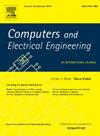用于图像加密应用的耦合卡普兰-约克-逻辑图
IF 4
3区 计算机科学
Q1 COMPUTER SCIENCE, HARDWARE & ARCHITECTURE
引用次数: 0
摘要
混沌在股票市场、量子物理、通信网络、疾病诊断、宇宙事件和数字数据安全等多个领域都具有实际意义。由于混沌图对初始条件的敏感性和不可预测性,它被广泛用于加密多媒体数据以确保通信安全。然而,有些混沌图的混沌动力学较弱,容易受到某些类型的攻击,限制了其在军事行动和个人数据加密或安全通信等敏感应用中的有效性。本研究提出了一种新型非线性离散混沌图,称为耦合卡普兰-约克-逻辑图。通过耦合混沌图、Kaplan-Yorke图和Logistic图,我们显著增强了混沌轨道长度、输出分布和混沌序列安全性等关键特性。根据分岔图、相图、李亚普诺夫指数分析、置换熵和样本熵等几种测量方法,对所提出的卡普兰-约克-逻辑耦合图进行了实证评估,结果表明,与最近提出的几种混沌图相比,卡普兰-约克-逻辑耦合图具有良好的遍历性和多种超混沌行为。因此,我们利用所提出的混沌图开发了一种高效的图像加密算法。该加密算法采用了一种利用同步混沌和扩散过程的方法,旨在大幅减少实时应用中加密和解密过程的计算时间,同时不影响安全参数。利用多种密码分析方法,包括密钥空间分析、信息熵、相关系数评估、差分攻击、密钥灵敏度测试、直方图分析、计算时间分析以及遮挡和噪声攻击,在各种图像数据集上对所提出的图像加密算法进行了全面评估。与最先进方法的对比分析表明了所提出算法的优越性。本文章由计算机程序翻译,如有差异,请以英文原文为准。
The coupled Kaplan–Yorke-Logistic map for the image encryption applications
Chaos has practical significance in various domains, including the stock market, quantum physics, communication networks, disease diagnosis, cosmic events, and digital data security. Chaotic maps are widely utilised for encrypting multimedia data for secure communication due to their sensitivity to initial conditions and unpredictability. However, some chaotic maps suffer from weak chaotic dynamics that can make them vulnerable to certain types of attacks, limiting their effectiveness in sensitive applications such as encryption or secure communication in military operations and personal data. This research study proposes a novel nonlinear discrete chaotic map termed a coupled Kaplan–Yorke-Logistic map. By coupling chaotic maps, the Kaplan–Yorke map and the Logistic map, we have significantly enhanced key features such as the length of chaotic orbits, output distribution, and the security of chaotic sequences. An empirical assessment of the proposed coupled Kaplan–Yorke-Logistic map in terms of several measures such as bifurcation diagrams, phase diagrams, Lyapunov exponent analysis, permutation entropy, and sample entropy shows promising ergodicity and a diverse range of hyperchaotic behaviours compared to several recent chaotic maps. Consequently, the proposed map is utilised to develop an efficient image encryption algorithm. The encryption algorithm employs a methodology that utilises simultaneous confusion and diffusion processes aiming to significantly reduce the computation time for encryption and decryption processes for real-time applications without compromising the security parameters. A thorough assessment of the proposed image encryption algorithm is performed on a variety of image datasets by utilising multiple cryptanalysis methods, including key space analysis, information entropy, correlation coefficient evaluation, differential attack, key sensitivity testing, histogram analysis, computational time analysis, and occlusion and noise attacks. Comparative analysis with the state-of-the-art methods indicates the superiority of the proposed algorithm.
求助全文
通过发布文献求助,成功后即可免费获取论文全文。
去求助
来源期刊

Computers & Electrical Engineering
工程技术-工程:电子与电气
CiteScore
9.20
自引率
7.00%
发文量
661
审稿时长
47 days
期刊介绍:
The impact of computers has nowhere been more revolutionary than in electrical engineering. The design, analysis, and operation of electrical and electronic systems are now dominated by computers, a transformation that has been motivated by the natural ease of interface between computers and electrical systems, and the promise of spectacular improvements in speed and efficiency.
Published since 1973, Computers & Electrical Engineering provides rapid publication of topical research into the integration of computer technology and computational techniques with electrical and electronic systems. The journal publishes papers featuring novel implementations of computers and computational techniques in areas like signal and image processing, high-performance computing, parallel processing, and communications. Special attention will be paid to papers describing innovative architectures, algorithms, and software tools.
 求助内容:
求助内容: 应助结果提醒方式:
应助结果提醒方式:


